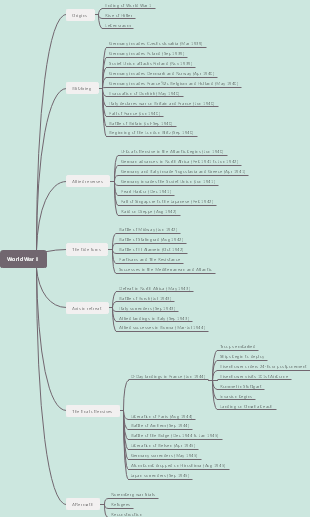MindMap Gallery Inventions Made Between 1750 and 1900
- 327
- 2
Inventions Made Between 1750 and 1900
This is a mind map that contains information about the inventions made between 1750-1900.
Edited at 2020-10-12 05:43:16- Recommended to you
- Outline
Inventions Made Between 1750 and 1900
Why did the Industrial Revolution begin in Britain?
Success of overseas colonies
Masses of resources drawn fromempires as a result
Could produce goods cheaplyand sell for huge profit
Colonies provided new markets formanufactured goods
Success of the slave trade
Slaves bought in Africa and sold totobacco and cotton plantations inAmerica
Cotton and tobacco was in turnsent back to Britain to be sold
Changes to energy, machinery, and scale
Human and animal labour replaced by steam
Steam followed by gas and electricity
New inventions and techniques thatchanged the way coal and steel wereformed
Many small workshops employing few peopleturned into large factories employing hundreds ofpeople
Change to transport
Creation of railways and canals allowedmaterials to be moved quickly andeasily.
The agricultural revolution in Britain
New machines seed drilling machinewhich allowed seeds to be sownquickly
Invention of mechanical ploughs,reaping machines and threshingmachines
Farm workers became replaced bymachines had to move to cities forindustrial work
More efficient uses of land
Inclosure movement the use of fences andboundaries to divide properties amongst peoplerather than the use of common land
The growth and extent ofthe British Empire from 1750 to 1900
By 1900 Britain's empire covereda quarter of the world's landsurface
Two stages old colonial systemand new imperialism
From 1750 mid 19th C, main reason for empirebuilding was to improve trade. The aim was to setup colonies in the Americas and Asia to providegoods,
Towards end of nineteenth century the empire became popular withthe British people. Slavery abolished and colonies began to wantselfgovernment. Empire continued to grow into Africa (the 'whiteman's burden').
Raw materials Britain obtainedfrom its Empire and the places they came from
Wool from Australia
Sugar from Jamaica
Cotton and tea from India
Key inventors and their inventionshow did they affect transport and manufacturing?
Jethro Tull invents mechanicalseed drill c.1701
Newcomen engine invented 171012
Britain's first canal 1757
James Hargreaves inventsspinning jenny 1764
James Watt condensing steamengine 176375
World's first railway line in Britain 1830
How industrialisation contributed to thedevelopment of Britain and Australia
Coal, textiles, transport
Mining increased
Employment increased
Technology improved production
Textiles Wool became a boom industry inAustralia with the development of the Merinobreed
Factory system and new machines madethe production of textiles quicker, moreefficient
Railway and canals allowed for the movement ofgoods and people to be quicker and moreefficient
Population movementduring the Industrial Revolution
People moved from countryvillages to towns and cities
Wealthy people emigrated to other countries in theEmpire to try and build business (eg Australia) asfree settlers
Other people were forced to move to cities insearch for work agricultural revolution left manypeople without jobs
Changes to the way of life
With the move to towns and cities livingconditions got very crowded andunsanitary
Water was dirty, food wasincreasingly expensive and poorquality
eg. The River Thames was so polluted it could nolonger sustain any fish or plant life yet peoplestill bathed in it and drank from it!
Whole families of up to ten livedin a single room without runningwater
There was often no running water and sewagesystems were not invented until the early1900's.
Working conditions
There were very little safety considerations
Workers were considered an expendable source it was cheaper to replace a worker than installsafety devices
Children were forced to work fromthe age of three to help providefood
Children were often used in cotton factories toclean out clogged machines many lost limbs ortheir lives in the process
Women and children preferred as workers as theywere paid less and could get into tight spaces inmachinery
Those who fell asleep severely punished if theywere lucky enough to escape death by falling intoa machine
'The Poor Law'
Positive and negativeimpacts of the Industrial Revolution
Increased use of fossil fuels and increasedemission of greenhouse gases led to smog andair pollution
Increase in consumption and waste land fill
Increased awareness for sustainability
New technologies
Population growth
Water pollution
Urbanisation
Industry
Forest clearing
Shortterm and longtermimpacts of the Industrial Revolution
Global landscape growth and change
Transport
Communication
Social revolution









